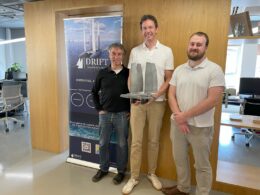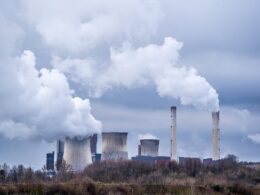As climate change expands the range of insect pests, regions previously unsuitable for breeding populations are becoming new habitats. These invasive pests pose serious risks to the environment and agricultural production, leading to strict trade restrictions on fresh produce to prevent their spread.
In Vietnam, where agriculture represents a quarter of the country’s GDP and supports 60% of the population, balancing trade with pest control is critical. Rising temperatures are also increasing the prevalence of food-borne illnesses, fungal growth, and spoilage.
With support from the International Atomic Energy Agency (IAEA) through its technical cooperation programme, Vietnam is turning to nuclear technology to safeguard its agriculture. By using electron beams, X-rays, and gamma rays to irradiate food, the country is ensuring that fresh fruit and vegetable imports and exports are free from pests, reducing food-borne illnesses, and extending product shelf life.
Food irradiation involves exposing food to ionising radiation, which breaks chemical bonds, kills pests, bacteria, and fungi, and slows down ripening. The technique ensures that fruits don’t sprout or ripen too early, parasites are eliminated, and food safety standards for international trade are met.
Since 1999, the IAEA has provided Vietnam with gamma and e-beam irradiators and offered training for staff at the Vietnam Atomic Energy Institute’s Research and Development Center for Radiation Technology, which oversees the country’s food irradiation efforts.
“Different types of foods can be irradiated, either using gamma rays from radioactive cobalt-60 or caesium-137 or, increasingly, with electron beams generated in machines, and X-rays. There are many health, quality and economic benefits of irradiation treatment capabilities that several other Member States can take advantage of while learning from experienced countries such as Vietnam,” said James Sasanya, Acting Head of the Food Safety and Control Section at the Joint FAO/IAEA Centre of Nuclear Techniques in Food and Agriculture.
For over 50 years, Vietnam has used food irradiation, initially for spices, and now for a wide range of products. The country irradiates over 120,000 tonnes of food annually, ensuring safety and extending shelf life. Tropical fruits such as dragon fruits and mangoes are particularly popular exports, and between 2012 and 2019, Vietnam’s fruit and vegetable trade grew by 350%, with rising demand from markets including the USA, EU, and China.
“I am proud to highlight the transformative role that nuclear science plays in enhancing food safety and agricultural productivity. Through technical cooperation projects at national, regional and interregional levels, the IAEA has empowered us to harness these advanced technologies. This collaboration fosters sustainable agricultural practices and contributes to the overall health and wellbeing of our nation,” said Tran Bich Ngoc, Director General, Department of Atomic Energy of the Ministry of Science and Technology.





















